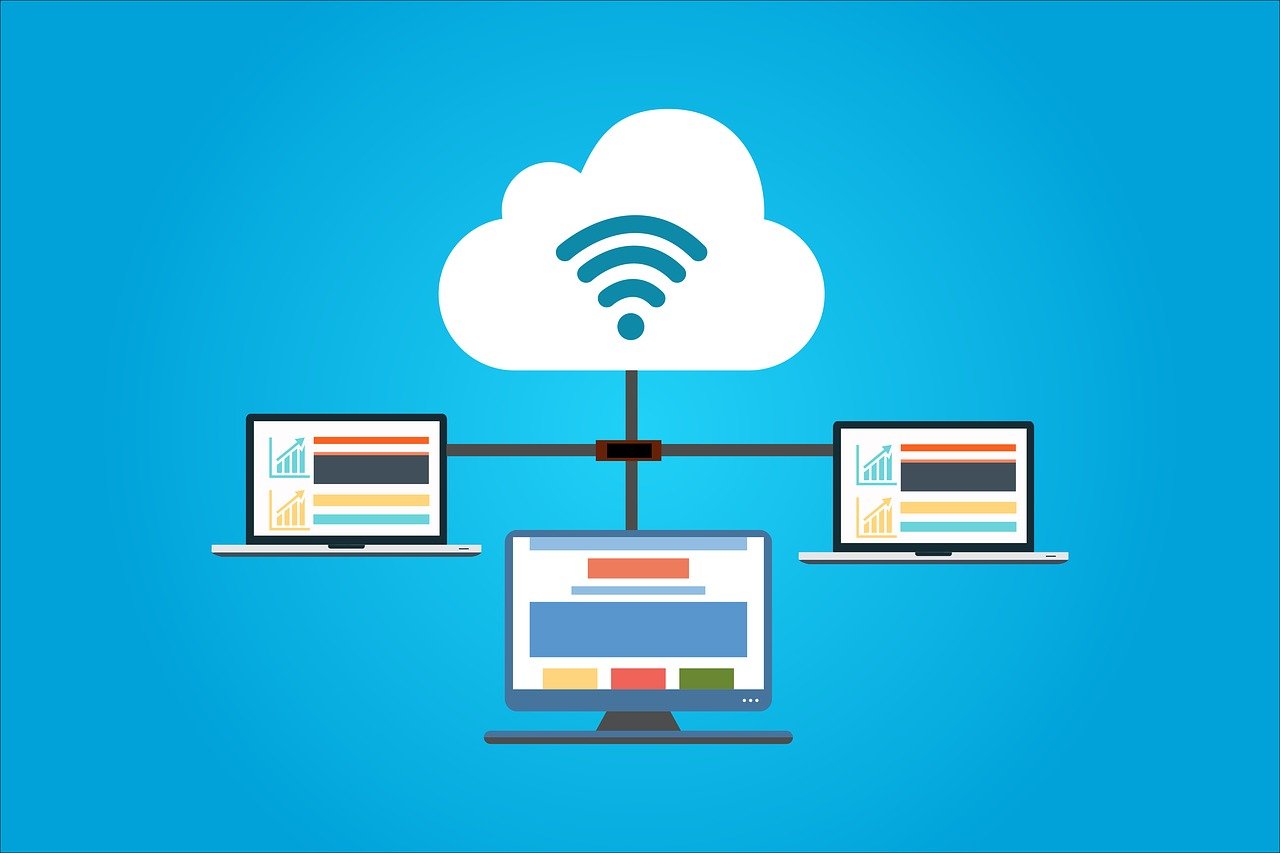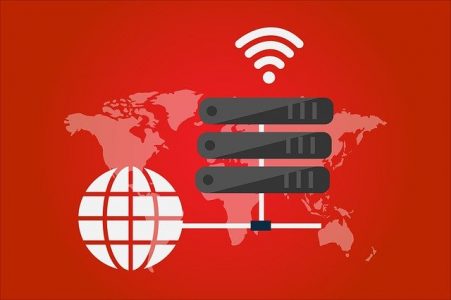
In order to save costs and resources in infrastructure, many companies resort to so-called virtual servers (vServers for short) – here is an example. This is a software-generated copy of a server machine that has the same functions as a dedicated server.
In addition to creating backups, vServers also allow applications to be run on operating systems for which they are not actually intended. In this article you will learn how a virtual server works and what advantages and disadvantages the technology brings.
Definition: what is a virtual server?
 By definition, the VM provides your own (virtual) hardware. A virtual private server (VPS) is a virtual machine that is used as a server. It is an image file that replicates the architecture of a real or hypothetical system.
By definition, the VM provides your own (virtual) hardware. A virtual private server (VPS) is a virtual machine that is used as a server. It is an image file that replicates the architecture of a real or hypothetical system.
The VM provides its own (virtual) hardware (including CPU, RAM, HDD, Ethernet) and is separate from the rest of the system. This means the software running inside it cannot manipulate the actual computer.
The infrastructure usually consists of a powerful physical server running the virtual machines. This is equipped with management software, the so-called “hypervisor, read more” (also: “virtual machine manager”, VMM), which is responsible for resource distribution.
Basically, a distinction is made between three types of server visualization:
- In full virtualization, the individual VPSs remain completely independent of each other.
In contrast, the guest servers know each other in a so-called paravirtualization system. - In operating system level virtualization, there is no hypervisor, but the function is part of the host operating system. However, the disadvantage of this method is that the same operating system must be run on all guest systems.
Where are virtual servers deployed?
Thin clients are a typical application area for virtual servers. There are many application areas for VPS. In the enterprise, they are often found in the context of “thin clients”, where multiple virtual desktops are centralized on a real server. Employees can access their data from anywhere, since they log in via the client but perform their work directly on the server.
VPSs can also be found in web hosting: with virtual server hosting, a provider makes server services available to you for your applications and services that are not assigned to any specific hardware. The virtual server behaves like a conventional server, but it is operated together with other VMs on a common platform. In this way, several customers share a “real” computer.
Another typical variant for virtual servers are cloud services (e.g. Google Cloud or Amazon Web Services). In this case, the provider operates the (virtual) IT infrastructure that customers rent in order to outsource their services or data inventories to it. He must also ensure that the individual VSPs do not (cannot) communicate with each other and that the data is thus protected from unauthorized access.
Good to know: There are also some providers on the Internet who will provide you with free vServers. With these, however, you almost always have to accept restrictions in the configuration and in the selection of the operating system. However, they are always sufficient for a private web project.
The advantages and disadvantages of virtual servers at a glance
The advantages of VPS
If required, you simply hand over the central administration of the virtual servers to your cloud provider. Using a virtual server pays off in many ways. In addition to the possibility of running several (different) operating systems on a single system, you benefit from a whole range of other advantages:
- Fast availability: You don’t have to order hardware or plan budgets for a virtual machine, because it can be created on the existing infrastructure with just a few mouse clicks. If you also use an operating system such as Microsoft Server 2012, there are no additional costs.
- Centralized management and control: The entire system can be managed via a single management program, which is usually supplied directly by the manufacturer. Maintenance and updates are carried out centrally and bundled by an administrator or can also be outsourced to the cloud provider if required. In this way, you not only save costs, but also time.
- Conservation of resources: With the help of virtualization, the hardware (CPU, RAM and storage) can be utilized better and, above all, more consistently. Modern processors are utilized less than 5% during normal operation and often only develop their full potential during server peaks. This costs you a lot of power and you are holding up resources that you basically don’t need.
Less costs, more flexibility
By using virtual servers, you not only save on acquisition costs, but also reduce your power consumption at the same time.
- Cost efficiency: Instead of purchasing several physical servers, you only need one for virtualization. This not only reduces acquisition costs, but also automatically reduces ongoing expenses and power consumption.
- Flexibility: The VPS can be customized to meet your specific needs. In addition to the possibility of a need-based expansion (e.g. in the case of company expansions), the reverse path is also open to you: If the existing resources are no longer needed, you can downgrade with relatively little effort.
- Disaster recovery: The VPS also scores points in the event of a hardware failure. A virtual server can be restored more quickly, if necessary even on different hardware. Even a move during operation is possible, and you can also back up all virtual machines together at host level.
The disadvantages of virtual servers
With many parallel accesses by the instances, bottlenecks can occur on the host system. We note: There are a number of reasons to use VPS. However, the technology also has some significant disadvantages, which we naturally do not want to leave out of this article.
- Dependence on the host system: If the host system has to be restarted, for example due to updates or a hardware replacement, all the virtual machines on it are also affected. These must then also be restarted, which extends the downtime even further. In addition, the number of virtual machines also has a direct impact on the reboot time of the host.
- Performance degradation: The hypervisor of the host system itself requires resources, which means that performance degrades and the guest system runs slower than on comparable “real” hardware. In addition, if multiple instances try to access the same resources (e.g., network, memory, etc.) in parallel, bottlenecks can form at that point, slowing down the overall system.
- Security issues: Multiple instances on a server mean that in the event of an attack (e.g. via the virtualization mechanisms), all the virtual machines running on it can also be involved. For this reason, VPSs also place completely new demands on the usual security concepts.